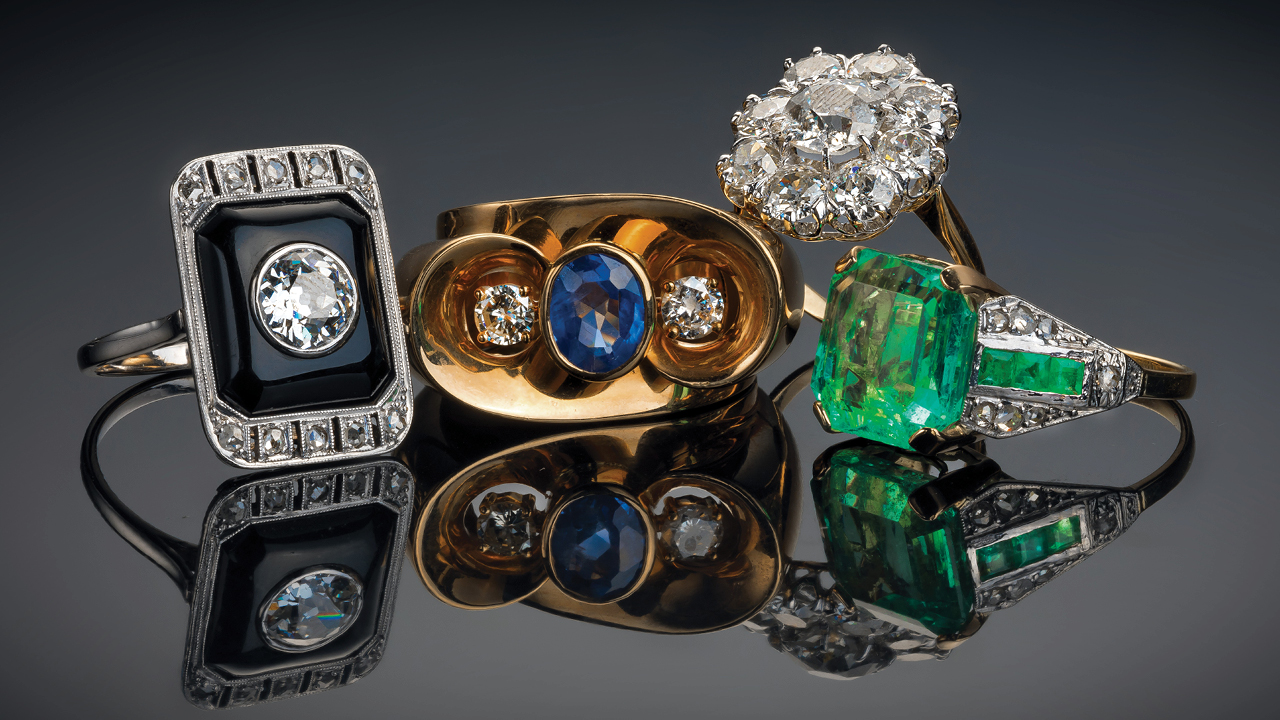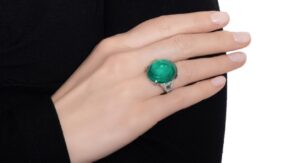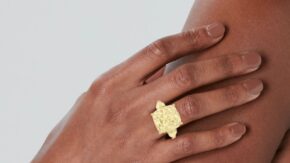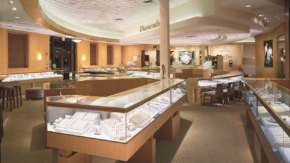Antique jewelry conveys “incredible memories of the ages and civilizations,” as well as the stories of the women who wore the pieces, writes Dior Joaillerie creative director Victoire de Castellane in the foreword to Antique French Jewelry 1800-1950.
The book’s author is Geoffray Riondet, an antique-jewelry specialist, legal expert and gemologist. Drawing on both his own expertise and input from experts at the French National Institute of Gemology (ING) Paris-Lyons, he has organized what he describes as a “comprehensive overview of antique French jewelry.”
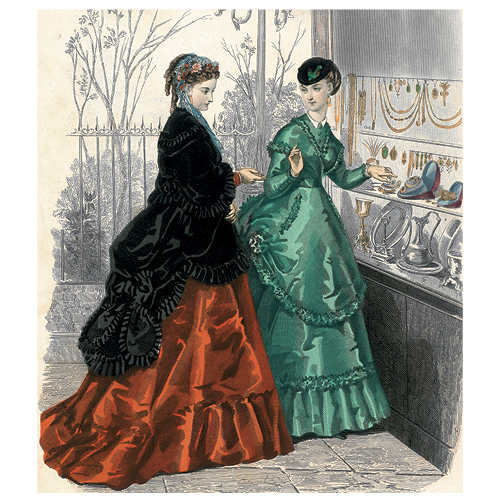
Pieces from before the 18th century rarely appear in the marketplace, he acknowledges, and the French Revolution (1789 to 1799) was a turning point. As such, Riondet concentrates on the 19th century and the first half of the 20th. Besides discussing the whys and wherefores of significant creations from the late 1700s through the 1950s, the text is illuminated with photographs, drawings and archival documents.
Putting styles in context
The century and a half that the book covers was a period when “a succession of highly diverse styles combined traditional craftsmanship and a constant quest for innovation,” writes Riondet. These pieces often feature lost skills and serve as inspirations for today’s jewelry designers, he adds.
The book explores the notable eras within the titular time span, relating historical information as well as the fashions of the day, the popular designers, and the different ways people wore the jewelry. The reader will learn the context, inspirations and trends of the Consulate and First Empire period (1799 to 1814); the Restoration (1814 to 1830); the July Monarchy (1830 to 1848); the Second Empire (1852 to 1870); the Belle Époque (1895 to 1914), Art Nouveau (1895 to 1910) and Art Deco (1920 to 1935) periods; and the 1940s and ’50s.

Riondet examines key political and economic factors and their impact on jewelry design, starting with the rise of the bourgeoisie and moving through the French campaign in Egypt from 1798 to 1801, the 1830 conquest of Algeria, and the pre- and postwar years. The book provides context for trends like the interest in antiquities, Egyptology, neo-Renaissance and naturalistic motifs, the use of platinum, the fluidity of Art Nouveau, and the geometric forms of Art Deco. It also discusses why some design styles begin in one era and return in another or fade away completely.
Component parts
The book’s second section focuses on the materials that shaped these jewels, including precious metals — gold, platinum and silver — nonprecious ones like copper, iron and aluminum, alloys like brass and nickel silver, and natural materials like hair, wood and enamel. Along with info about the metals’ characteristics, the author lays out aspects such as the history of their use, where to find deposits, how to determine their purity, and how to care for them. There are also sketches of the main French hallmarks through the decades.
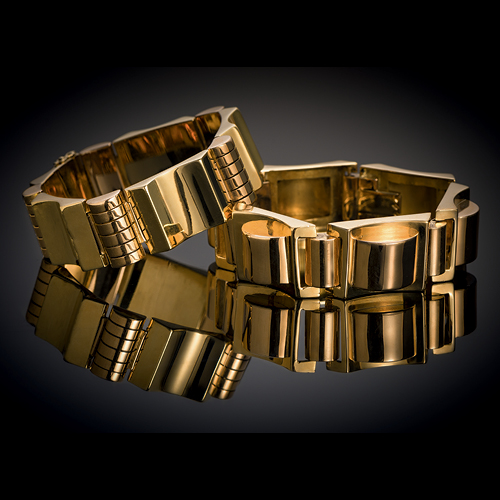
A section on gemstones familiarizes the reader with popular gems and other natural materials that French creators used in jewelry, such as tortoiseshell and ivory. Another section runs through the main types of jewelry categories, from rings and bracelets to brooches and head ornaments. Rounding out the book are a list of design houses and notable artists whose influence characterized the covered time span, and a section with practical advice on getting appraisals and valuations, buying, selling, and insurance.
The final grace note to this helpful guide is a bibliography of sources to further the reader’s education about antique jewelry.
In Focus: Amethyst
Antique French Jewelry 1800-1950 offers readers a close-up look at the gemstones that featured most often in pieces from that period, including agate and aquamarine, coral and rock crystal, diamond and emerald, ivory, pearl, ruby and sapphire. For each stone, the book lists characteristics, history, color and provenance.
The gold necklace below, which dates from circa 1830, is a superb illustration of amethyst. A variety of quartz, the purple stone gets its name from an ancient Greek word that literally translates to “not intoxicated.” In antiquity, people believed amethyst could prevent drunkenness “because its color is similar to that of wine,” the book explains. The gem appears in the Bible and in the work of ancient Egyptians, and bishops in the Middle Ages wore rings with amethyst stones. During the Restoration period in France from 1814 to 1830, renewed trade with Brazil contributed to the stone’s commercialization around the world.
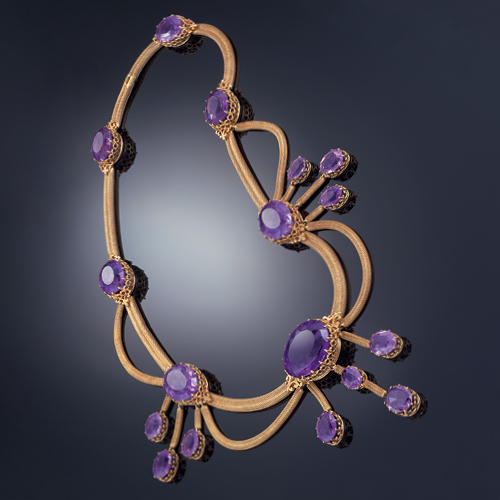
Antique French Jewelry 1800-1950 was published in April by Flammarion.
Main Image: Rings from the late 19th century to the 1950s. (Maison Riondet)
This article is from the May-June 2024 issue of Rapaport Magazine. View other articles here.
Stay up to date by signing up for our diamond and jewelry industry news and analysis.
